Ruiqi Yu
SerialGen: Personalized Image Generation by First Standardization Then Personalization
Dec 02, 2024

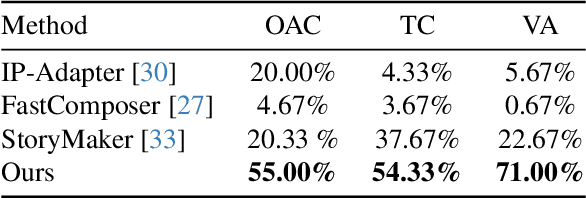

Abstract:In this work, we are interested in achieving both high text controllability and overall appearance consistency in the generation of personalized human characters. We propose a novel framework, named SerialGen, which is a serial generation method consisting of two stages: first, a standardization stage that standardizes reference images, and then a personalized generation stage based on the standardized reference. Furthermore, we introduce two modules aimed at enhancing the standardization process. Our experimental results validate the proposed framework's ability to produce personalized images that faithfully recover the reference image's overall appearance while accurately responding to a wide range of text prompts. Through thorough analysis, we highlight the critical contribution of the proposed serial generation method and standardization model, evidencing enhancements in appearance consistency between reference and output images and across serial outputs generated from diverse text prompts. The term "Serial" in this work carries a double meaning: it refers to the two-stage method and also underlines our ability to generate serial images with consistent appearance throughout.
PIE: Parkour with Implicit-Explicit Learning Framework for Legged Robots
Aug 27, 2024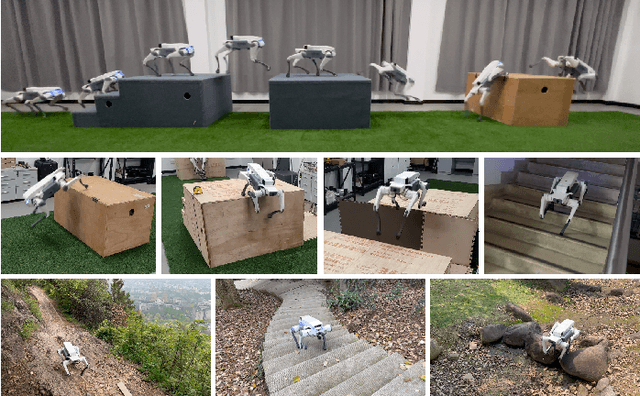
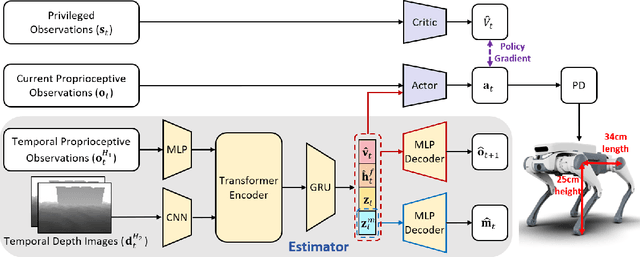

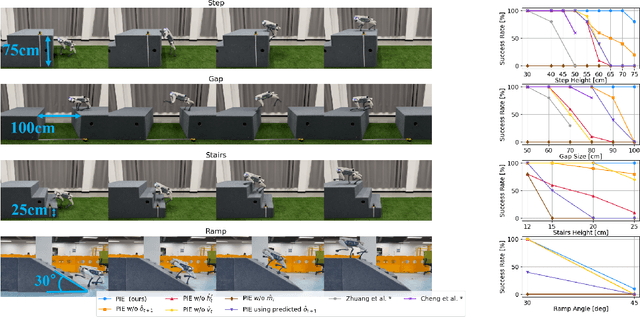
Abstract:Parkour presents a highly challenging task for legged robots, requiring them to traverse various terrains with agile and smooth locomotion. This necessitates comprehensive understanding of both the robot's own state and the surrounding terrain, despite the inherent unreliability of robot perception and actuation. Current state-of-the-art methods either rely on complex pre-trained high-level terrain reconstruction modules or limit the maximum potential of robot parkour to avoid failure due to inaccurate perception. In this paper, we propose a one-stage end-to-end learning-based parkour framework: Parkour with Implicit-Explicit learning framework for legged robots (PIE) that leverages dual-level implicit-explicit estimation. With this mechanism, even a low-cost quadruped robot equipped with an unreliable egocentric depth camera can achieve exceptional performance on challenging parkour terrains using a relatively simple training process and reward function. While the training process is conducted entirely in simulation, our real-world validation demonstrates successful zero-shot deployment of our framework, showcasing superior parkour performance on harsh terrains.
Toward Understanding Key Estimation in Learning Robust Humanoid Locomotion
Mar 09, 2024Abstract:Accurate state estimation plays a critical role in ensuring the robust control of humanoid robots, particularly in the context of learning-based control policies for legged robots. However, there is a notable gap in analytical research concerning estimations. Therefore, we endeavor to further understand how various types of estimations influence the decision-making processes of policies. In this paper, we provide quantitative insight into the effectiveness of learned state estimations, employing saliency analysis to identify key estimation variables and optimize their combination for humanoid locomotion tasks. Evaluations assessing tracking precision and robustness are conducted on comparative groups of policies with varying estimation combinations in both simulated and real-world environments. Results validated that the proposed policy is capable of crossing the sim-to-real gap and demonstrating superior performance relative to alternative policy configurations.
Hunting imaging biomarkers in pulmonary fibrosis: Benchmarks of the AIIB23 challenge
Dec 21, 2023
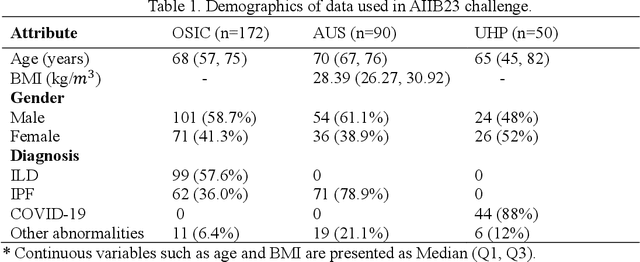
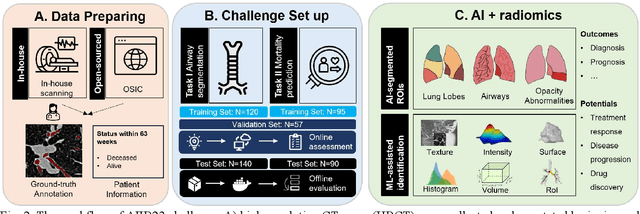
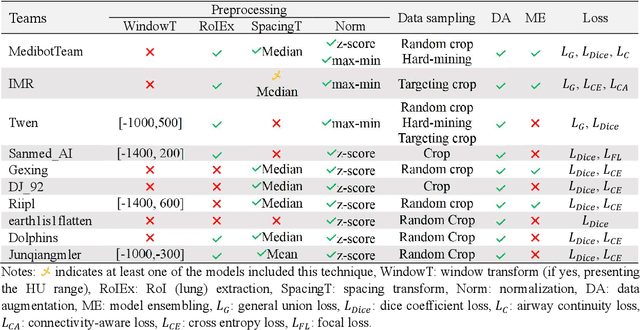
Abstract:Airway-related quantitative imaging biomarkers are crucial for examination, diagnosis, and prognosis in pulmonary diseases. However, the manual delineation of airway trees remains prohibitively time-consuming. While significant efforts have been made towards enhancing airway modelling, current public-available datasets concentrate on lung diseases with moderate morphological variations. The intricate honeycombing patterns present in the lung tissues of fibrotic lung disease patients exacerbate the challenges, often leading to various prediction errors. To address this issue, the 'Airway-Informed Quantitative CT Imaging Biomarker for Fibrotic Lung Disease 2023' (AIIB23) competition was organized in conjunction with the official 2023 International Conference on Medical Image Computing and Computer Assisted Intervention (MICCAI). The airway structures were meticulously annotated by three experienced radiologists. Competitors were encouraged to develop automatic airway segmentation models with high robustness and generalization abilities, followed by exploring the most correlated QIB of mortality prediction. A training set of 120 high-resolution computerised tomography (HRCT) scans were publicly released with expert annotations and mortality status. The online validation set incorporated 52 HRCT scans from patients with fibrotic lung disease and the offline test set included 140 cases from fibrosis and COVID-19 patients. The results have shown that the capacity of extracting airway trees from patients with fibrotic lung disease could be enhanced by introducing voxel-wise weighted general union loss and continuity loss. In addition to the competitive image biomarkers for prognosis, a strong airway-derived biomarker (Hazard ratio>1.5, p<0.0001) was revealed for survival prognostication compared with existing clinical measurements, clinician assessment and AI-based biomarkers.
 Add to Chrome
Add to Chrome Add to Firefox
Add to Firefox Add to Edge
Add to Edge